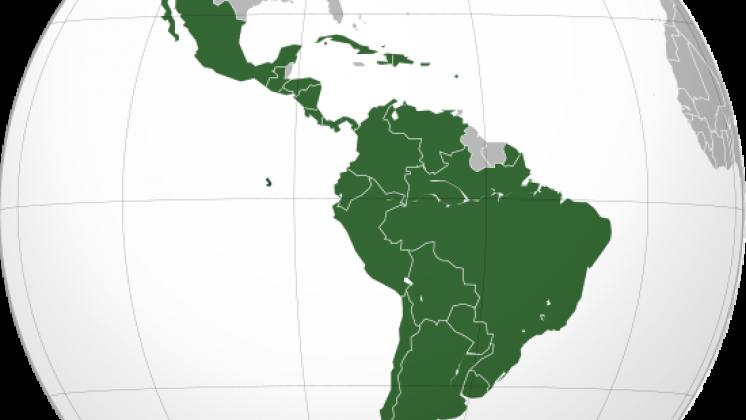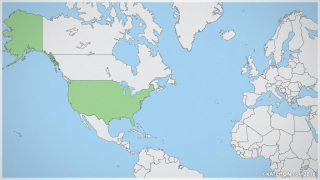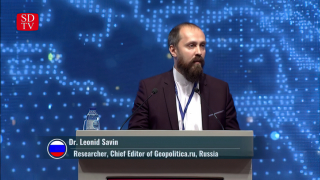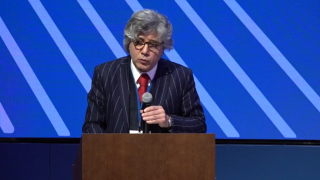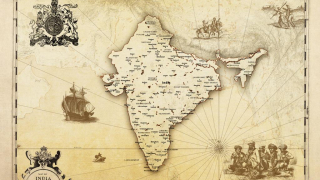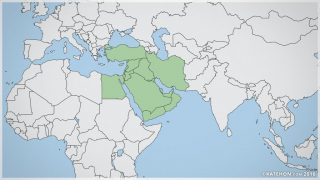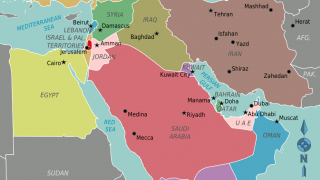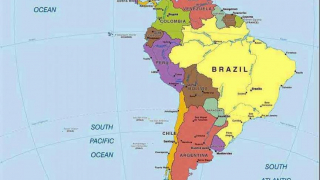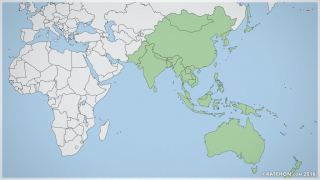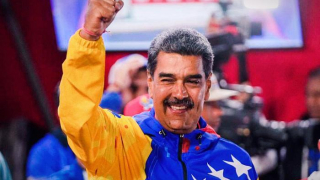Latin America: Trends and Forecast for 2018
In general
Latin America (we have in mind Central and South America, i.e. the region of the Western hemisphere that stretches from Mexico and the Caribbean Basin in the north to Terra del Fuego in the south) was in 2017 located in a zone of geopolitical turbulence: practically all main states were struck by political discord, crises, and processes which go beyond the bounds of normativity. Some of them were caused by the inertia of earlier events, others were a reaction from society, political elites or external forces, mainly the US.
It is important to note, that after Donald Trump's accession to the White House the general focus on Central and South America shifted somewhat. The old proverb about the US’ real neighbours being fish and Mexicans has become reality again. First, after the renunciation of the Trans-Pacific Partnership on trade and investment, the states that were simulated by the Obama administration to sign the treaty were disappointed by the US approach. Second, Washington has distanced itself somewhat from a series of projects, although it continues its manipulations through several foundations, diplomatic missions, and supranational administrations like the Organisation of American States. Mexico has become topical because of the initiation of new discussions about the NAFTA (the treaty about a North American free trade zone, which consists of the US, Canada, and Mexico) and Trump’s new migration policy, which significantly limits the options of labour migrants.
Several Latin American countries have traditionally been guides for US interests because of tight contacts between political elites and financial-oligarchic circles. In addition, it is necessary to note that the traditional division in right and left is markedly different in Latin America from the division in European countries. The right in Central and South America are oriented towards cooperation with Washington and transnational structures and not on defending the sovereign interests of their nations. The left is subject to the influence of Trotskyism and several human rights defamations (for example, supporting sexual minorities), but on the other hand it is often linked to Catholicism (generally to Liberation Theology).
In general, we can note that several geopolitical centres exist in the region, which the general political climate in the area depends on. There are also states which function as junctions. They are very important as elements of general infrastructure, but they cannot actively influence events by themselves. The other countries do not play a particular role and are forced to acquiesce to the current conjecture. Seeing as there is now a tendency towards the creation of an integral Latin American Space with its own cultural-political identity (CELAC, Mercosur, and other integrational projects), these countries balance between external actors that offer various preferences and internal continental processes.
However, the general tendency for the region is rather more negative than positive.
According to data from the Economic Commission for Latin America and the Caribbean (ECLAC), the poverty level in the region has grown to 186 million people in 2016.
Extreme poverty has grown from 8,2% in 2014 (48 million) to 10% in 2016 (61 million). Poverty affects 46,7% of all children and teenagers from 0 to 14 years and extreme poverty among these groups reaches 17%. Sadly, there are no reasons for the improvement of these indicators, which is why the social degradation of the region will continue in 2018. The main economic engines of Latin America, Brazil and Argentina, will be stuck in continuous instability for at least another two years. The junction states will try to follow a pragmatic political line and hedge their bets on the economy and not on ideology. Nonetheless, countries such as Bolivia and Venezuela will continue to be the object of interference by the US because of their geographic location as well as their natural resources, mainly oil and gas.
In a wider historical perspective and standard political spectrum, we observe a change related to the alignment of parties and movements. The turn to the left that was characteristic for many countries of the region at the beginning of the century and characterised its development (high prices for oil and other natural resources made it possible to execute social reforms, which, in turn, secured the electoral support of the masses) has been stalled by the changes in the market conjecture, the results of the global crisis, and a revanche of rightist forces, which activated themselves not without US support under the Obama presidency. In Honduras, Paraguay, Guatemala, and Вrazil, presidents were removed by impeachments, and in Argentina, Peru, Guatemala, Paraguay, Honduras, Panama, the Dominican Republic, and Brazil the right came to power, which made it possible for several experts to speak of a 'turn to the right’.
Nonetheless, it is necessary to take account of the fact, that the left and right in Latin America have recently shown a tendency to move to the centre, all the while using populist tactics and new communication methods.
Another element we must take account of is the growth of indigenous movements in the region. In Colombia, Bolivia, Peru, and Venezuela the Indians now have more rights on an official level than was envisaged by the UN. This tendency of the organic inclusion of autochthonous peoples in national projects and the general Latin American discourse will continue.
Small countries like Barbados (and Panama as well) have garnered the interest of other states as offshores. The limitations that were enacted by a series of countries coincided with economic weakness, which might show in their economies in general. In December 2017, the EU blacklisted 17 states for ‘refusing to cooperate’ on the issue of taxation. Among them are five Caribbean states: Grenada, Trinidad and Tobago, Panama, Santa Lucia, and Barbados.
Mexico
In July 2018 presidential elections will be held. Earlier in 2016, leader of the oppositional party National Action Party of Mexico Ricardo Anaya Cortes, encouraged by the party’s successes in the gubernatorial elections, declared that he would win the presidential election as well. The other possible favourite is Andrés Manuel López Obrador from the National Regeneration Movement, who has twice already stood for the office of president (in 2006 and 2012).
There are independent candidates as well. Emilio Alvarez, the former executive secretary of the Inter-American Commission on Human Rights, has created the ‘Now’ movement, which is critical of the current government. Another independent is Armando Rios of the ‘Wave 365’ movement.
Against the background of worsened relations with the US because of Trump’s new policy, who has promised to build a wall alongside the Mexican border, as well as continuing mass killings (2017 has become a record year in comparison to others, with 23 thousand victims in 11 months: all this is a result of so-called narcowars, which were started by the US), several political groups are trying to develop new sectors in internal and foreign politics.
Meanwhile, the American agents in the country are trying to spread rumours of Russian involvement in the coming elections, in order to provoke scandals and manipulate public opinion in advance. If the pro-American candidate loses, we can say with confidence that Washington will repeat its thesis about Moscow’s interference in the Mexican elections.
One way or another, the victory of the candidate who is sceptical of the US and ready to start cooperation with states on that are on the road towards multipolarity will be a serious test for the White House, which has gotten used to seeing loyal followers of its will at its border in the form of the political elite and a cheap work force in Mexican citizens.
Central America
The countries of the northern triangle (Guatemala, El Salvador, Honduras) can cause additional problems for the US in 2018. The growth of violence in these countries, turmoil after the presidential elections in Honduras (earlier the US had given more than 17 million dollars to the countries leadership to strengthen security), and the growth of the drugs trade: these challenges are discussed in political circles in Washington as the next potential problems. To them we must add the depressed economy in Nicaragua. Although the ruling Sandinist Front for National Liberation has managed to hold power after the last regional elections and its representative has become president in 2016, there have been no successes in the improvement of the country’s citizens well-being, including through the realisation of several large projects that were promised in the last several years. The construction of an alternative to the Panama Canal remained on paper after all. The government does not have concrete plans for the country’s further development. Russia contains its support of many years to Nicaragua with deliveries of technology and foodstuffs; however, such forms of cooperation are distorted by the liberal press, which claims that Moscow is building intelligence centres and military bases in the country. In reality, there is no special drive towards bilateral relations and the current contact is more a result of the inertia of a long-standing friendship from the times of the USSR than a strategic decision. Costa Rica is of special interest to the US, both because of the leftist government in Nicaragua and for the control of Central America in general (pretexts are the battle against drug cartels, humanitarian aid, fixing the results of natural disasters, and personnel training). The situation will remain relatively stable in Panama. It is unlikely that the US will interfere in the country’s affairs if access to the Panama Canal, which is an important regional artery for the US Navy, remains open. Although the country is shaken from time to time by various protest actions, they are of a local character and are not a threat to national security in general.
Venezuela
There was constant criticism in US foreign policy rhetoric of the Venezuelan leadership, against which sanctions were engaged. The country was on the brink of an economic disaster: hyperinflation, unemployment, constant sabotage from the opposition and mercenary agents – all these factors repeatedly questioned the effectiveness of Nicolas Maduro’s socialist government. Nonetheless, towards the end of the year it was possible to restructure part of the country’s foreign debt and execute a reorganisation of the administration of a key government company (the oil company PDVSA), hold regional elections, and make the transition to a constructive phase of talks with the opposition.
In 2017 a Constitutional Assembly, a new legislative organ, was created in Venezuela. On the 15th of October, regional elections were held (for provincial governors) and which were won by the Chavists. The Round Table for Democratic Unity (an opposition group) only received places in five of the twenty-three provincial governments, which strengthened Maduro’s position.
If earlier the opposition’s representatives refused to hold any kind of negotiations with the government, after the October elections they have become more talkative. The first meeting took place on the first and second of December. The next round of negotiations will take place in the Dominican Republic on 11-12 January 2018 with the assistance of representatives from other governments in the region.
The parties Acción Democratica, Voluntad Popular, and Primero Justicia, who are part of the opposition bloc, might be prevented from proposing their candidates for the position of president in 2018. Taking into account the fact that the two main opposition politicians (Leopoldo Lopez and Henrique Capriles) will practically not be allowed to take part in the elections, the liberals and right wing in Venezuela have a smaller and smaller chance of winning. This will push them towards illegal activities and provocations and also draw attention from the US and its satellites.
Nonetheless, a sharp drop in the country’s quality of life has forced tens of thousands of Venezuelans to emigrate. Many of them have relocated to Peru due to the lack of serious barriers to relocation.
In the coming year a lot will depend on the government’s ability to lessen the economic crisis in the country. The IMF has said, that the level of inflation will reach 2300% in 2018.
Cuba
The White House has also pressured Cuba, in particular because of the diplomatic scandal and accusations against the Cuban leadership of the use of technologies that are damaging to health against employees of the US diplomatic mission in Havana. The current situation in Cuba can be characterised as caesarism transitioning towards transformismo (following Gramsci). The start of reforms related to economics and governance are slowly opening up the country for both foreign capital and information influence. Because of the close geographical proximity of the US and its continuing ideological influence through different media projects, the Cuban government must put in a lot of effort to strike a balance between the demands of society and changing government policy.
It is known, that Raul Castro will not be standing for re-election as head of the Council of Ministers and the Cuban State Council. His mandate lasts until the 19th of April 2018.
Miguel Diaz-Canel, the current vice-president and former minister of education, has been named as a possible successor. He was born in 1960 and is from the generation of leaders that appeared after the victory of the revolution. Diaz-Canel has publicly chosen a line of continuity with current policy.
Colombia
Colombia’s main achievement in 2017 has been the realisation of a peace agreement with the armed group FARC, which has been made a legal political party. This took place with Cuban mediation. Although other illegal groups continue to be active in the country, the government intends to gradually build a peace process. The Army of National Liberation (ELN) has also agreed to stop military action; however, in December 2017 it accused the government of irreciprocal attacks and attempts to change the meaning of the agreement. Bursts of violence might start as early as January 2018, which is when the cease-fire will end.
Ecuador
In Ecuador, Rafael Correa’s successor, former vice-president from 2007 to 2013 Lenin Moreno won the presidential elections in May 2017. The country’s policy remains unchanged. The country is part of the ALBA alliance alongside Cuba, Venezuela, and Bolivia. The stabilisation of the oil price is also good for Ecuador, which busies itself with extracting and exporting the resource. It is unlikely that there will be significant changes in 2018 unless they are provoked by outside forces.
Bolivia
In Bolivia, Evo Morales declared his decision to stand for a fourth term. Although a majority declared to be against a fourth term in a referendum in 2016, the ruling ‘Movement towards Socialism’ party advised him to find any solution so that Morales could stay in power. In November the country’s Constitutional Tribunal removed all limitations on presidential terms.
This decision will be another pretext for the US and its agents in Latin America to heighten the pressure on Morales and initiate various provocations. At the end of 2017, in the city of La-Paz mass protests of medical workers which devolved into confrontations with the policy took place. Any social unhappiness in Bolivia will be politicised and used against Morales and his allies in the future.
Bolivia has an important geopolitical meaning, as it is located in the centre of South America and has significant amounts of natural gas and various minerals.
Chili
In December, Sebastián Piñera, who had earlier led the government from 2010 to 2014, won the second round of the presidential elections. Piñera is a child of the Chicago Boys group, studied at Harvard, and represents the National Renewal party. It is telling, that Piñera trounced Michelle Bachelet from the left-centrist coalition of democratic parties, who had also held the post a second time and was the country’s president from 2006 to 2010 before Piñera’s accession.
In 2018 Piñera will stick to the pragmatic way in politics and to neoliberal reforms in economics. In addition, he will be following a strategy of balance: what is good for Chili will be welcomed with open arms. In relation to this, ties with China will be strengthened. But the door will be open to the US as well. We shouldn’t expect progress as far as the long-term discussions with Bolivia about sea access are concerned.
Peru
As is shown by the Peruvian case, several crises in Latin America are interrelated. An investigation in Brazil brought to light corrupt schemes in Peru. In December 2017, the Peruvian court of appeals satisfied a request of a lower institution concerning former president Ollanta Humala and his wife Nadine Heredia. They are in custody for 18 months while an investigation into the corrupt links between civil servants and the Brazilian construction company Odebrecht is conducted; the former director of this company, Jorge Barata, has declared that he gave Humala 3 million dollars in 2011 for his election campaign. Several civil servants from the administration of president Alan Garcia (2006-2011) were also arrested. It was also discovered, that Odebrecht paid bribes of 29 million dollars to bureaucrats from the Dominican Republic and Panama. Offshore companies and cash-in-hand schemes were used to accomplish this.
It must be added, that in April 2017 another judge wrote out an arrest warrant for former president Alejandro Toledo (2001-2006) and his wife Eliane Karp, who are located in the US. This episode is related to real estate manipulations, but in this case the Peruvian-Israeli businessman Josef Maiman is involved, through whose company that was registered in Costa Rica (Ecoteva) money was transferred. Peru has sent a request to Interpol for the extradition of both suspects.
We add, that former president of Peru Alberto Fujimori (1990-2000) was under arrest for corruption and crimes against humanity. His daughter Keiko Fujimori stood for president in 2011 and 2016 and is the leader of the Fuerza Popular party. However, the scandal with her father reflected on her reputation as well.
Another impeachment procedure for the Odebrecht case has been started against current president Pedro Pablo Kuczynski, an economist with work experience in the World Bank. As practically the entire line of his predecessors has been shown to have been involved in corrupt schemes, Kuczynski will have to see the investigation through to the end and try to balance pressure from various political forces and the ‘demands of the street’. At the same time, Kuczynski pardoned Fujimori at the end of December 2017 because of his health, which raised a lot of questions in Peruvian society.
The most likely scenario for Peru is a further movement towards the political strategy of the US, but with a look-back on Asian markets, mainly China and Japan. Washington’s refusal to sign the TPP will force Peru into a more intensive dialogue with other Pacific countries.
On the 13th and 14th of April 2018, the Summit of the Americas is due to take place in Lima. It is likely that Washington’s loyalty to Kuczynski is related to this. The Americans themselves suggest, that because of the sharp change in Washington’s policy towards Latin America, the summit will be a serious trial for Trump.
Argentina
Oligarch and pro-Western politician Mauricio Macri has refused the national sovereign path which was followed by Nestor and Cristina Kirchner. Foreign debts that were annulled under Cristina Kirchner were acknowledged. Taking into account his account over the main media, Macri will continue his course of fragmenting the opposition in order to secure re-election for a second term. His party’s victory in the parliamentary elections in October 2017 has given him additional confidence.
Leftist parties and unions have come out against Macri’s reforms, one of which is a pension reform aimed at solving the problem of the budget deficit. Many protest actions took place through the whole country, and this tendency will continue in 2018.
In addition, the Macri regime has initiated the persecution of Cristina Kirchner and her entourage. Although she is an elected senator and has legal immunity, accusations of treason and harbouring terrorists have been moved forward against her (the official reason is cooperation with Iran about annulling Interpol’s red notices on several Iranian citizens).
Macri is also planning to sign agreements with the US, EU, and Israel on trade, economic, and military cooperation.
On the 30th of November 2018, for the first time the G-20 Summit will be held in Buenos Aires, a first for South America. Macri will try to extract a maximum of benefit for his image and introduce themes that interest the country’s leadership into the discussion. What is more, under the pretext of strengthening security measures he will begin repressions against the opposition and strengthen control over the social-political sector.
In Argentina, the incident with the loss of the submarine ‘San Juan’ has become the subject of conspiracy theories in the context of a long dispute over the Malvinas Islands (the Falklands according to Britain), which were annexed by the UK and which were fought over in 1986 in the last naval engagement of the 20th century. The opposition also thinks that the current liberal leadership of the country is guilty of the loss.
But we can hardly expect to see some kind of decision to be taken about the Malvinas that would be acceptable for Argentine society under Macri.
Brazil
After the impeachment of Dilma Rousseff, Brazil’s course towards multipolarity was suspended. Corruption scandals and subsequent arrests are rocking the country. Michel Temer, who is a Mason and henchman of the West, nonetheless signed an agreement in December about an amnesty for many players in corrupt activities. In addition, a liberalisation of the economy is ongoing in the country. There have been attempts to sell the national company Embraer to the American firm Boeing for a fairly low price. The growth of unemployment, homelessness, and illiteracy is a serious problem in Brazil. The Temer administration has no plan of any kind to improve the country’s situation. In 2018, presidential elections will be held in Brazil, in which Luis Ignacio Lula da Silva is determined to stand. To this day he has a large amount of support among the people. Several accusations have been put forward against him, however, the court has not proven his participation in any crimes as of yet. If he manages to register as a candidate, there is a large chance that he will win the election and can reorganise the Labour Party, which was discredited during the last few years of Dilma Rousseff’s rule.
Nonetheless, Brazil nominally remains part of the BRICS and continues initiatives that have been started earlier. Cooperation with Russia in the sphere of energy (atomic and hydro) and aero-spatial technologies is developing and there are agreements about cooperation in other sectors, including in railway construction.
Paraguay
After the political crisis in Paraguay in March-April 2017, president Horacio Cartes’ expressed desire to stand for a second term (according to the constitution it is forbidden to hold the post of president for more than one term) and the following mass protests in the capital of Asuncion, including the capture and burning of the parliament, Cartes promised not to stand in the next elections. However, the balance of political power remains predictable: the ruling Colorado party has strong positions.
The next elections for the post of president are set to take place in April 2018. The further development of the country will depend on their results. A victory for the right will automatically mean a closed policy towards other countries in Latin America (including potential resistance to initiatives under the auspices of CELAC and Mercosur), while the accession of a leftist candidate can balance the growth of Atlanticist influence. It is necessary to note, that the parliamentary coup against Fernando Lugo in 2012 was part of an American strategy to strengthen its influence in the region.
Uruguay
Uruguay’s internal politics in the last 15 years shows, that not all leftist governments hold fast to the struggle against imperialism, social injustice, and inequality. Tabaré Vasquez’ (2005-2010) castling to José Mujica and the later return of Vasquez (from March 2015 onwards) shows how leftist ideas can be used as an instrument to reach the corridors of power. By the way, Trotskyism has a large amount of popularity in Latin American countries to this day. Both of the mentioned politicians represent the left-centrist Broad Front, which is ideologically close to the projects of many globalists like George Soros.
And there was a case in 2013, when during a press conference Mujica whispered to a subordinate, unware that the microphones were already on: “that old bat is even worse than the squint”, referring to Argentinian president Cristina Kirchner and her late husband, which led to a diplomatic scandal and threw doubt on the honesty of many of Mujica’s declarations and actions (he positioned himself as a charitable president who lived in poverty).
Also, several journalists conducted an investigation which showed that a Soros foundation had financed lobbyists for the legalisation of soft drugs. Marijuana was legalised under Mujica in 2013. In the same year, single sex marriages were legalised.
In 2018 the course of the washing away of Uruguayan identity will continue through different liberal-globalist programmes. In a wider context, Uruguay as well as Paraguay are both important to foreign powers for the creation of additional restraining factors related to Brazil and Argentina.
Translated from the Russian by V.A.V.

